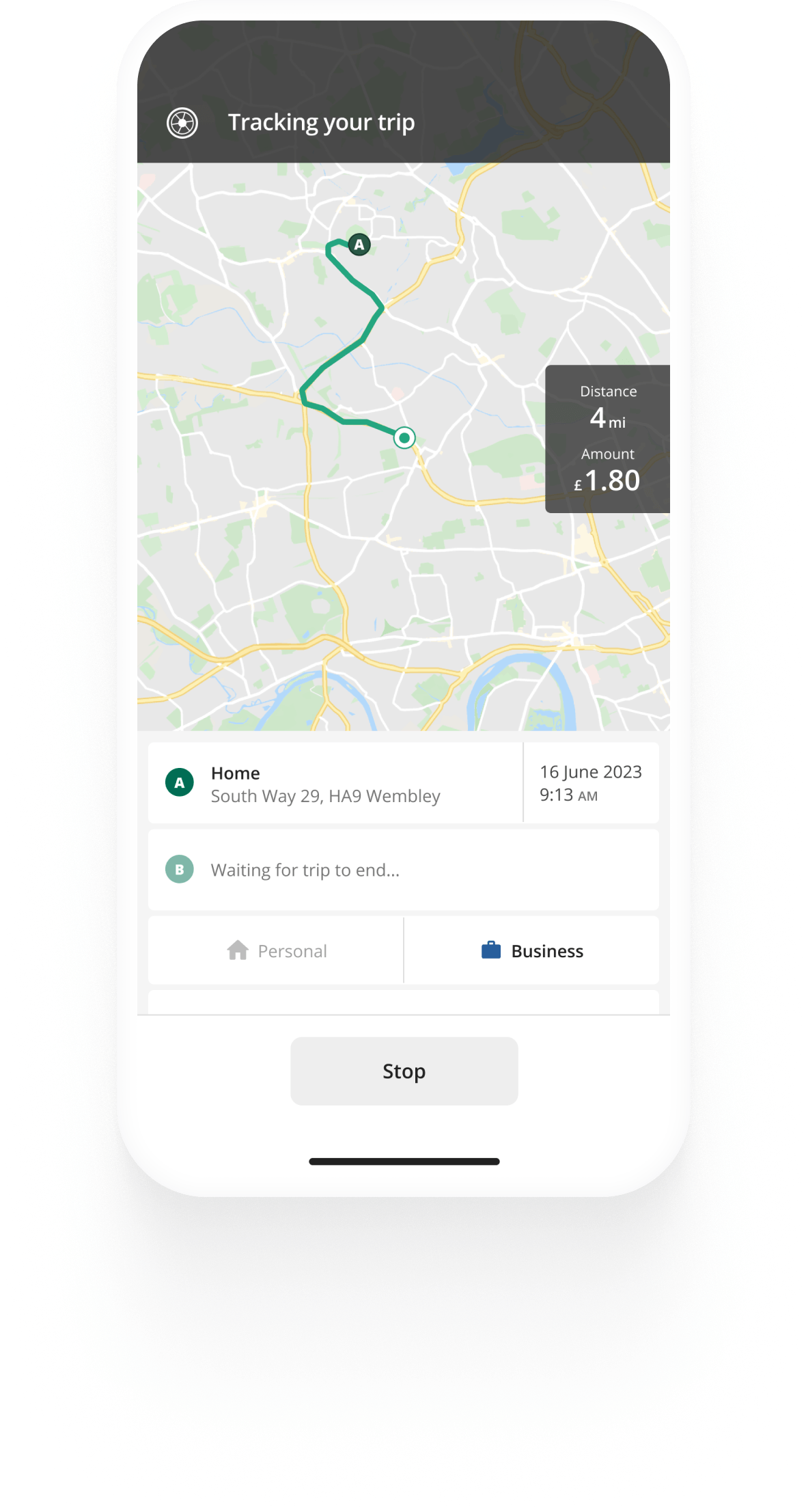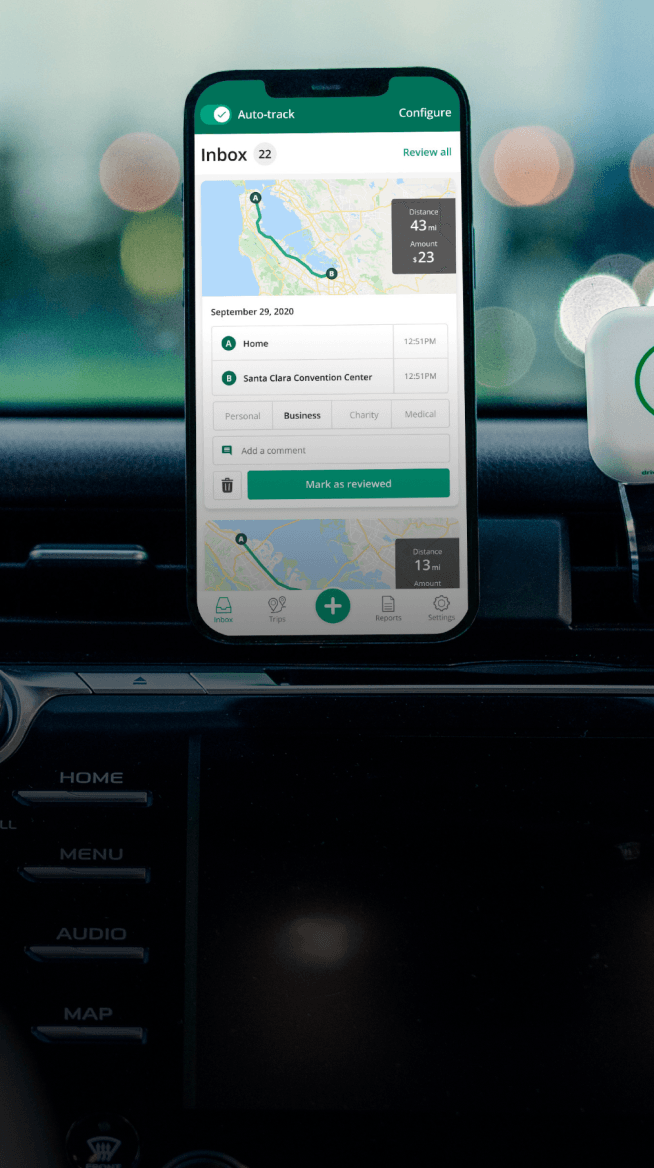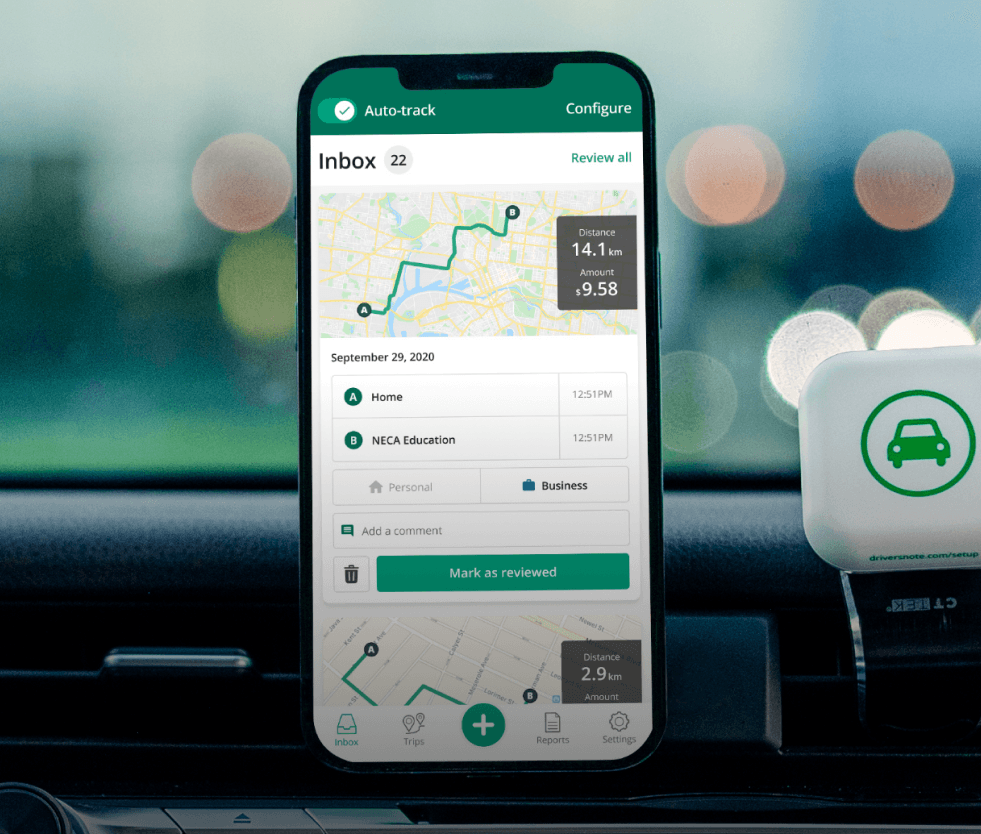Track mileage automatically
Get started
Claiming simplified expenses on your tax return
There are several ways to claim expenses on your 2025/26 tax self-assessment tax return. In this article, we break down how to claim simplified expenses as a self-employed person.
Understanding simplified expenses
Using HMRC’s simplified expenses method is just one of two ways to calculate some of your business expenses. The method involves using a flat rate instead of calculating your actual business costs.


Mileage tracking made easy
Trusted by millions of drivers
Automate your mileage log Automate your mileage log

Automatic mileage tracking and HMRC-compliant reporting.
Get started for free Get started for freeSimplified expenses eligibility
You can use simplified expenses if you’re a sole trader or in a business partnership without companies as partners. However, limited companies or business partnerships involving a limited company can't use simplified expenses.
Claiming simplified expenses
You can claim the following on simplified expenses:
- Working from home costs, such as stationery and phone bills
- Clothing expenses, such as uniforms
- Staff costs
- Things you buy to sell, such as raw materials or stock
- Financial costs, such as bank charges or business insurance
- Business premises costs such as lighting, heating and business rates
- Marketing and advertising costs, such as your business’s website
- Training courses relating to your business
- Business costs for some non-commercial vehicles, such as cars, goods vehicles and motorcycles
- Living on your business premises
Preparing to use simplified expenses with good recordkeeping
Keep records of your vehicle’s business miles, how many hours you work at home and how many people live in your business premises over the tax year.
How to calculate deductions using the simplified expenses method
If you use a vehicle for business purposes, live on your business premises, or work from home, the simplified expenses method gives you a straightforward way to calculate your deductible expenses. Here’s how to do it for each applicable expense category:
Working from home
You need to have worked from home for a minimum of 25 hours each week to be able to claim your working-from-home costs using the simplified expenses method.
Here are the flat rates based on the number of hours of business use per month:
| Hours of business use per month | Flat rate per month |
|---|---|
| 25 to 50 | £10 |
| 51 to 100 | £18 |
| 101 and more | £26 |
For example, if you worked from home for 55 hours for 9 months and worked 40 hours from home for 3 months, you can claim a maximum of £144 for the year. Here’s how we worked it out:
£10 x 9 months = £90
£18 x 3 = £54
£90 + £54 = £144
Note that the flat rate doesn’t include phone or internet expenses. These can be claimed separately using the business proportions of actual costs method.
Recordkeeping requirements
Keep track of the amount of time you work from home for business purposes each month. This could look like an online timesheet or a written log to help you claim the right flat rate when the time comes.
For vehicles
You can also claim a flat rate on your business-related vehicle mileage. This saves you time calculating the actual costs of buying and running your vehicle, such as fuel, servicing, repairs and insurance.
You can claim simplified expenses for the following vehicles:
- Cars (except those designed for commercial use, like taxis or dual-control cars used by driving instructors)
- Goods vehicles (excluding vans)
- Motorcycles
Please be aware that you can’t claim simplified expenses for a vehicle you’ve already claimed capital allowances for or you’ve included as an expense when calculating your business profits.
Here are the flat rates for simplified expenses mileage, based on vehicle type and distance travelled for business purposes:
| Vehicle | Flat rate per mile |
|---|---|
| Cars and goods vehicles first 10,000 miles | 45p |
| Cars and goods vehicles after 10,000 miles | 25p |
| Motorcycles | 24p |
For example, if you drove 20,000 miles for business in the last tax year, you can claim the following:
£4,500 for the first 10,000 miles (10,000 x 45p) and £2,500 for the remaining 10,000 miles (10,000 x 25p). The total amount you can claim using the flat rate in this instance is £7,000.
However, you don’t have to use these flat rates for all of your vehicles. Regarding vehicle simplified expenses, HMRC states that once you use the flat rates for a vehicle, you must continue to do so for as long as you use that vehicle for business purposes.
While simplified expenses offer a convenient option for vehicle costs, remember that you can still claim the full amount of other business-related travel expenses, such as train journeys and parking fees.
Recordkeeping requirements
Keep a detailed record of your business miles using a mileage tracking app, a logbook or fuel receipts.
For living in your business premises
If you live in your business premises, such as a guest house or a bed and breakfast, you can use simplified expenses instead of working out how to split your private and business use of the premises.
Using simplified expenses, you can calculate the total cost of expenses and then use flat rates to subtract an amount for personal use based on the number of people living with you and claim the rest as your business expenses.
| Number of people | Flat rate per month |
|---|---|
| 1 | £350 |
| 2 | £500 |
| 3+ | £650 |
For example, you run a bed and breakfast with your spouse. You live at the premises for the entire tax year, and your overall business expenses are £20,000.
Using the simplified expenses method, you can use the £500 per month flat rate because two of you are at the premises, equalling £6,000 for the year.
You then subtract this amount from your expenses (£20,000), meaning you can claim £14,000 in that tax year.
Please be aware that if someone else lives with you for only part of the year, you can only deduct the relevant flat rate for the number of months they lived with you on the business premises.
Recordkeeping requirements
Keep track of the number of people living on the business premises throughout the tax year so you can accurately calculate the flat rate when the time comes.
Deciding between the simplified expenses or proportion of eligible costs methods
While simplified expenses offer a quicker and easier way to calculate the self-assessment tax deductions you’re entitled to, it might not be the best method to use. To decide which method is right for you, think about your actual costs. If they are significantly higher than the flat rate you can claim using simplified expenses, it might be worth working out the actual proportion of costs instead.
Even if you don’t use the self-assessment simplified expenses method this year, familiarising yourself with it can help you plan for future tax years when using the method makes more financial sense.
FAQ

Tired of logging mileage by hand?
Effortless. HMRC-compliant. Liberating.
Top posts
- What expenses can I claim as self-employed?
- Advisory fuel rates 2025
- Expenses spreadsheet for small businesses [Free download]
Related posts
Free mileage log book template
Latest update: 7 May 2025 - 2 min read
Whether you're an employee or a business owner, it's crucial to keep good mileage records in a mileage log book.
HMRC Mileage Guide
Latest update: 2 April 2025 - 5 min read
Welcome to our guide on mileage claims and reimbursement in the UK. This guide will walk you through the rules that apply to your situation.
What expenses can I claim as self-employed?
Latest update: 22 October 2025 - 2 min read
This article provides a list of allowable expenses and tips for being tax-compliant with HMRC as a self-employed individual.
.svg)

.svg)